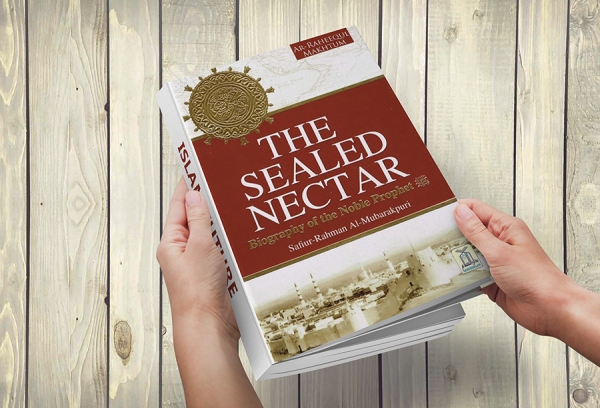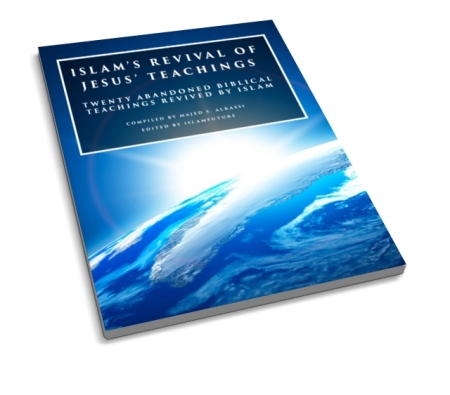
بِسۡمِ ٱللهِ ٱلرَّحۡمَـٰنِ ٱلرَّحِيمِ
In the name of Allah, the most Beneficent, the most Merciful
God says in His Noble Book:
وَٱلَّذِينَ يُؤۡذُونَ رَسُولَ ٱللَّهِ لَهُمۡ عَذَابٌ أَلِيمٌ۬
But those who hurt Allâh’s Messenger (Muhammad PBUH) will have a painful torment. [The Noble Qur’an Al-Tawbah 09:61]
You should know this man
You may be an atheist or an agnostic; or you may belong to any of the religious denominations that exist in the world today. You may be a Communist or a believer in democracy and freedom.
No matter who you are, and no matter what your ideological and political beliefs, personal and social habits happen to be. You must still know this man.
Encyclopedia Britannica confirms: “…a mass of detail in the early sources shows that he was an honest and upright man who had gained the respect and loyalty of others who were likewise honest and upright men.”(Vol: 12)
Bernard Shaw said about him: “He must be called the Savior of Humanity. I believe that if a man like him were to assume the dictatorship of the modern world, he would succeed in solving its problems in a way that would bring it much-needed peace and happiness”. (The Genuine Islam, Singapore, Vol. 1, No. 8, 1936)
He was by far the most remarkable man that ever set foot on this earth. He preached a religion, founded a State, built a nation, laid down a moral code, initiated numerous social and political reforms, established a powerful and dynamic society to practice and represent his teachings and completely revolutionized the worlds of human thought and behavior for all times to come. His name is Muhammad.
Born in Arabia in the year 570 CE, he started his mission of preaching the religion of Truth, Islam (submission to One God) at the age of forty and departed from this world when he was sixty-three.
During this short period of 23 years of his prophethood, he changed the entire Arabian peninsula from paganism and idolatry to the worship of One God; from tribal quarrels and wars to national solidarity and cohesion; from drunkenness and wickedness to sobriety and piety; from lawlessness and anarchy to disciplined living; from utter bankruptcy to the highest standards of moral excellence. Human history has never known such a complete transformation of people or a place before or since – and imagine all these unbelievable wonders took place in just over two decades.
La Martine, the renowned historian, speaking on The Essentials or Human Greatness, said: “If greatness of purpose, smallness of means and astounding results are the three criteria of human genius, who could dare to compare any great man in modern history with Muhammad? The most famous men created arms, laws and empires only. They founded, if anything at all, no more than material powers which often crumbled away before their eyes. This man moved not only armies, legislations, empires, peoples and dynasties, but millions of men in one-third of the (then) inhabited world; and more than that, he moved the altars, the gods, the religions, the ideas, the beliefs and souls … his forbearance in victory, his ambition, which was entirely devoted to one idea and in no manner striving for an empire; his endless prayers, his mystic conversations with God, his death and his triumph after death — all these attest not to an impostor, but to a firm conviction which gave him the power to restore a dogma. This dogma was twofold, the unity of God and the immateriality of God; the former telling what God is, and the latter telling what God is not; the one overthrowing false gods with the sword, the other starting an idea with the words.
Philosopher, orator, apostle, legislator, warrior, conqueror of ideas, restorer of rational dogmas, of a cult without images, the founder of twenty terrestrial empires and of one spiritual empire that is Muhammad. As regards all the standards by which human greatness may be measured, we may well ask, is there any man greater than he?” (La Martine, Historic de la Turquie, Paris, 1854, Vol. II, pp. 276-277)
The world has had its share of great personalities. However, these were one-sided figures who distinguished themselves in one or two fields, such as religious thought or military leadership. The lives and teachings of these great personalities of the world are shrouded in the mist of time. There is so much speculation about the time and place of their birth, the mode and style of their life, the nature and detail of their teachings and the degree and measure of their success or failure that it is impossible for humanity to reconstruct accurately the lives and teachings of these men.
Not so this man. Muhammad, , accomplished so much in such diverse fields of human thought and behavior in the fullest blaze of human history. Every detail of his private life and public utterances has been accurately documented and faithfully preserved to our day. The authenticity of the records so preserved is vouched for not only by the faithful followers, but also by his prejudiced critics.
Muhammad, , was a religious teacher, a social reformer, a moral guide, an administrative colossus, a faithful friend, a wonderful companion, a devoted husband, a loving father – all in one. No other man in history ever excelled or equaled him in any of these different aspects of life – but it was only for the selfless personality of Muhammad, , to achieve such incredible perfection.
Mahatma Gandhi, speaking on the character of Muhammad, , says in Young India;
“I wanted to know the best of one who holds today undisputed sway over the hearts of millions of mankind… I became more than convinced that it was not the sword that won a place for Islam in those days in the scheme of life. It was the rigid simplicity, the utter self-effacement of the Prophet, the scrupulous regard for his pledges, his intense devotion to his friends and followers, his intrepidity, his fearlessness, his absolute trust in God and in his own mission. These and not the sword carried everything before them and surmounted every obstacle.
When I closed the 2nd volume (of the Prophet’s biography), I was sorry there was not more for me to read of the great life”.
Thomas Carlyle, in his Heroes and Hero-Worship, was simply amazed as to: “How one man single handedly, could weld warring tribes and wandering Bedouins into a most powerful and civilized nation.”
Diwan Chand Sharma wrote: “Muhammad was the soul of kindness, and his influence was felt and never forgotten by those around him.” (D. C. Sharma, ‘The Prophets of the East’, Calcutta, 1935, pp. 12).
Speaking on the aspect of equality before God in Islam, the famous poetess of India, Sarojini Naidu says:
“It was the first religion that preached and practiced democracy; for, in the mosque, when the call for prayer is sounded and worshippers are gathered together, the democracy of Islam is embodied five times a day when the peasant and king kneel side by side and proclaim: God Alone is Great.
I have been struck over again by this indivisible unity of Islam that makes man instinctively a brother.” (S. Naidu, Ideals of Islam, vide Speeches & Writings, Madras, 1918, P. 169).
The world has not hesitated to raise to divinity, individuals whose lives and missions have been lost in legend. Historically, none of these legends achieved even a fraction of what Muhammad, , accomplished. And all his striving was for the sole purpose of uniting humanity for the worship of One God on the codes of moral excellence. Muhammad, , or his followers never at any time claimed that he was a Son of God or God-incarnate – but he always was and is even today considered as only a Messenger chosen by God.
Michael H. Hart in his recently published book on ratings of men who contributed towards the benefit and upliftment of man writes: “My choice of Muhammad to lead the list of the world’s most influential persons may surprise some readers and may be questioned by others, but he was the only man in history who was supremely successful on both the religious and secular levels”. (M.H. Hart, ‘The 100: A ranking of the most influential persons in History’, New York, 1978 pp.33).
Today after a lapse of fourteen centuries, the life and teachings of Muhammad, , have survived without the slightest loss, alteration or interpolation. They offer the same undying hope for treating humankind’s many ills, which they did when he was alive. This is not a claim of the followers of Muhammad, , but also the inescapable conclusion forced upon by a critical and unbiased history.
The least you could know as a thinking and concerned human being is to stop for a moment and ask yourself: Could these statements sounding so extraordinary and revolutionary be really true? And supposing they really are true and you did not know this man Muhammad, , or hear about him, isn’t it time you respond to this tremendous challenge and put in some effort to know him?
It will cost you nothing but it may prove to be the beginning of a completely new era in your life.
We invite you to make a discovery of this wonderful man, Muhammad, , the like of whom never walked on the face of this earth. Continue reading →









